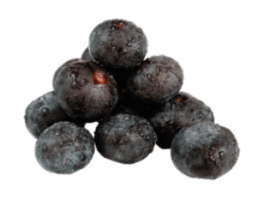
Our Ingredients
For the past three decades, we have blended delicious, functional teas inspired by the ancient holistic philosophy of Ayurveda.
Today, we create over 40 wellness tea blends made from 140 exotic spices and botanicals sourced from around the globe. These ingredients are carefully selected with flavor and purpose in mind, so that each and every cup of Yogi tea is infused with the synergistic benefit of herbs; imparting both delicious taste and healthful benefits.

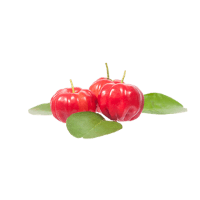
Acerola Fruit Extract
Acerola, a fruit sometimes known as the Barbados Cherry or West Indian Cherry, is a South American superfruit and source of Vitamin C. Acerola fruit looks similar to a cherry, with skin that turns a deep red when ripe. The flavor of Acerola fruit varies but is most often lightly sweet and tart.

Alfalfa Leaf
Alfalfa Leaf is a nutritive plant in the legume family, which has been used in traditional herbal medicine for over 1,500 years. Also known as lucerne, Alfalfa Leaf has been long prized for its superior vitamin, mineral and protein content. Most notably, Alfalfa Leaf is rich in saponins; plant compounds believed to contribute to reduced cholesterol levels.
With its mild, grassy flavor, Alfalfa Leaf is often enjoyed dried in tea. In Ayurveda, Alfalfa Leaf is typically used for its cooling and astringent properties, and is also considered a cleansing herb.
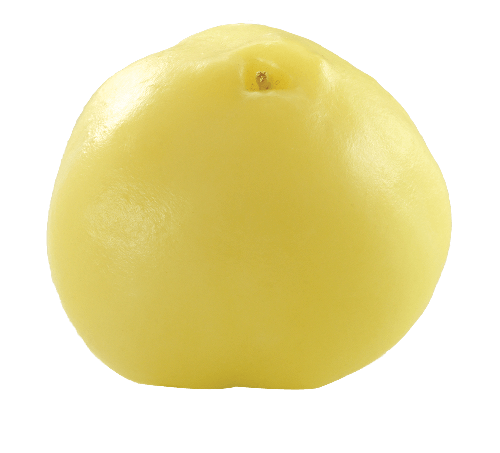
Amla Fruit
Amla Fruit, or Emblic Fruit (Amalaki), is one of the most commonly used herbs in Ayurveda. A sour fruit that is native to India, its flavor is much like an apricot. Amla Fruit is typically used in Ayurvedic as a remedy for inflammation, and is also prized for its cooling properties.
A strong rejuvenative, Amla Fruit supplies antioxidants and Vitamin C, and can also help support digestive function. Additionally, Amla Fruit is the basis for an Ayurvedic rejuvenative jam called chyavanprash, and the widely-used combination herbal blend, triphala.


Apple Cider Vinegar Powder

Ascorbic Acid
Ascorbic acid – also known as Vitamin C or ascorbate – is a vitamin found in various foods including citrus fruit, tomatoes, and leafy vegetables. This vitamin is believed to play a role in helping to support tissue growth and repair, as well as immune function.
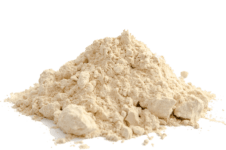
Ashwagandha
Ashwagandha root (Withania somnifera) comes from the Ashwagandha plant; a small shrub that is a relative of tomatoes and potatoes. Native to India and North Africa, Ashwagandha is traditionally used to support stress tolerance, performance and endurance.
While Ashwagandha is often called “winter cherry” and “Indian Ginseng”, this adaptogen is unrelated to the true Ginsengs, though it appears to share their many properties and actions; including its use as a stress-supporting herb.
In Ayurveda, Ashwagandha is considered a “grounding” herb, one that nourishes and regulates metabolic processes. As such, Ashwagandha is often used to support anxiety and stress relief, as well as to support positive moods. Additionally, Ashwagandha is also often used in Ayurveda as a tonic for men, as it may have positive effects on male reproductive health and is thought to mimic the effects of testosterone.
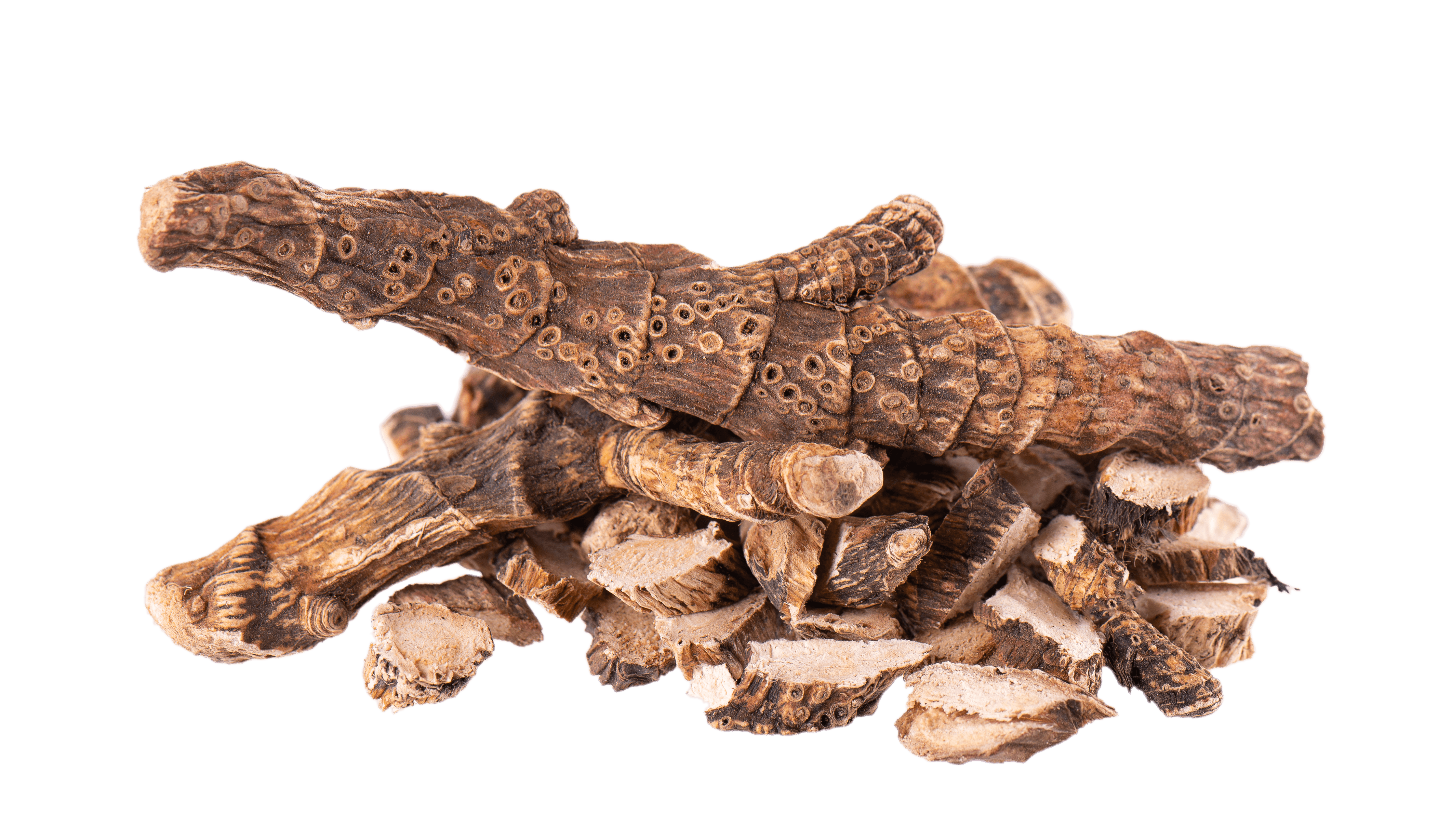
Ashwagandha Extract
Ashwagandha root (Withania somnifera) comes from the Ashwagandha plant; a small shrub that is a relative of tomatoes and potatoes. Native to India and North Africa, Ashwagandha is traditionally used to support stress tolerance, performance and endurance.
While Ashwagandha is often called “winter cherry” and “Indian Ginseng”, this adaptogen is unrelated to the true Ginsengs, though it appears to share their many properties and actions; including its use as a stress-supporting herb.
In Ayurveda, Ashwagandha is considered a “grounding” herb, one that nourishes and regulates metabolic processes. As such, Ashwagandha is often used to support anxiety and stress relief, as well as to support positive moods. Additionally, Ashwagandha is also often used in Ayurveda as a tonic for men, as it may have positive effects on male reproductive health and is thought to mimic the effects of testosterone.
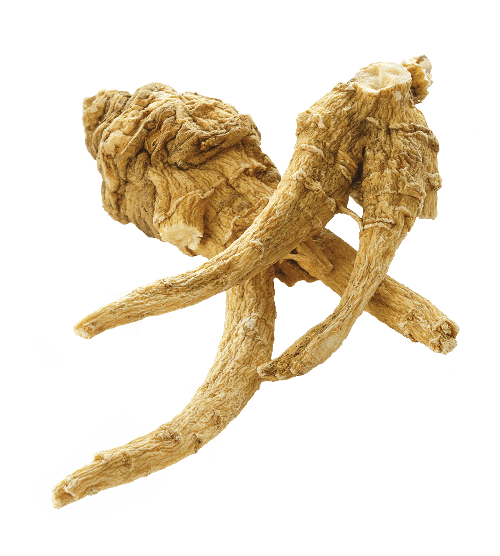
Asian Ginseng Root (Panax ginseng)
Asian Ginseng Root (Panax ginseng) comes from many areas in East Asia, and is often identified by the region of its origin. This herb is one of the most widely used in the United States and in Asia, where it is often used on a daily basis to support general health.
Considered an adaptogenic herb, Ginseng has been traditionally used to remedy long-term stress, as well as to support cognitive function and stamina. Similar to other adaptogens, Ginseng is considered most effective when used over moderately long periods of time (one-to-three months).
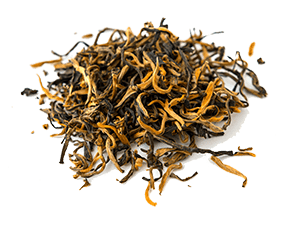
Assam Black Tea
Assam Black tea is a black tea named after the region of its production: Assam, India; one of the only two areas in the world with native tea plants. Assam Black tea is one of the most recognized teas in the world, and is characterized by its rich body, briskness, malty flavor and strong, bright color.
Like all black teas, Assam Black tea is made from the leaves of the Camellia sinensis plant, but this type is a specific variety known as assamica. Unlike most highland tea varieties, Assam Black tea is grown at or near sea level. Assam Black tea is typically harvested twice, in a “first flush” and a “second flush,” which produces leaves with a golden tip and a sweeter, full-bodied flavor.
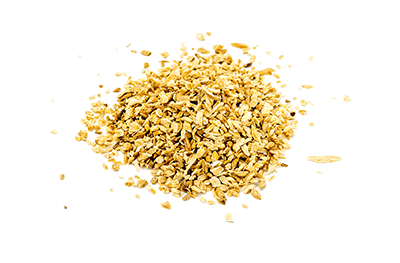
Astragalus
Astragalus, also known as huáng qí or milkvetch, is an herb used in Traditional Chinese Medicine. Astragalus is considered to be an adaptogen, and as such, has a number of uses in herbalism. Primarily, Astragalus is used to support immune function and respiratory health.
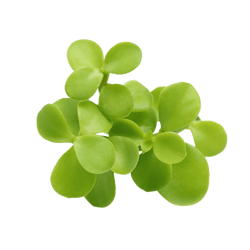
Bacopa Extract
Bacopa is a nootropic herb that has been used in traditional Ayurvedic medicine for centuries to help support cognitive function. It was classified by ancient herbalists as a “Medya Rasayana”, or “rejuvenator of the intellect.”

Belleric Myrobalan Fruit (Bibhitaki)
Belleric Myrobalan Fruit (Bibhitaki) is one of three renowned fruits of Ayurveda (joining Amalaki and Haritaki), and one of three herbs in the widely-used Ayurvedic remedy, triphala. The Bibhitaki fruit is most commonly grown in the forests and plains of India, and is known for its astringent quality and sour taste.
In Ayurveda, Bibhitaki has been traditionally used to support the digestive tract and general digestive functions, but can also help to support the urinary and respiratory tracts. One notable property of this Ayurvedic fruit is that it is prized for both its laxative and astringent effects; characteristics not typically found within a single herb. With its warming energy, Bibhitaki is considered one of the best herbs for managing a Kapha constitution.
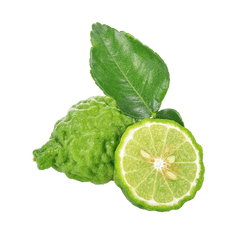
Bergamot Oil
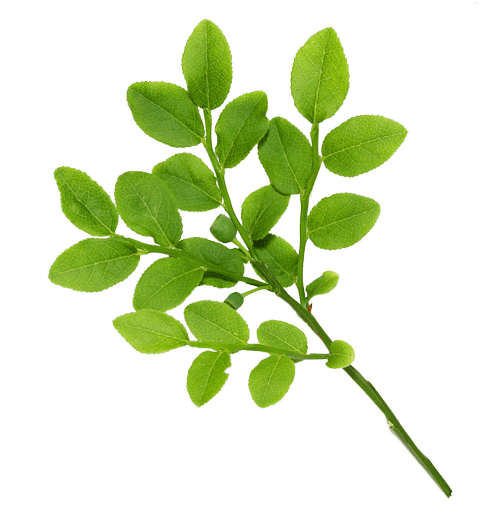
Bilberry Leaf
The bilberry plant, also known as huckleberry and whortleberry, is a shrubby plant that grows in the moderate climates of Eurasia. Bilberry Leaf supplies antioxidants, called anthocyanosides, that can help prevent free radical damage.

Black Elderberry
Native to Europe, Black Elderberry has been used in European folk medicine since antiquity. Elderberries supply anthocyanidins – powerful purple pigment compounds that act as antioxidants. Black Elderberry can also help support respiratory function, and is often used by herbalists to soothe the throat.
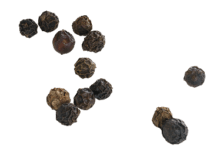
Black Pepper
Not only is Black Pepper one of the most widely used culinary spices in the world, it also has a long history of use in traditional herbal medicine. A spicy herb that can help support digestion, it also supplies antioxidants, which can help to reduce free radicals. As a diuretic, black pepper can support water balance in the body.
- CAFFEINE FREE Organic Chai Latte
- CLASSIC Organic Chai Latte
- Cold Season Tea
- DeTox Tea
- Echinacea
Immune Support Tea - Egyptian
Licorice® Mint Tea - Egyptian Licorice® Tea
- Elderberry Lemon Balm Immune + Stress Tea
- Ginger Tea
- Honey Chai Turmeric Vitality Tea
- Honey Lemon
Throat Comfort® Tea - Lemon Ginger Tea
- LIGHT Organic Chai Latte
- Orange Clove Tea
- Peach DeTox Tea
- Roasted Dandelion
Spice DeTox Tea - Soothing Caramel
Bedtime®Tea - Stomach Ease Tea
- Sweet Ginger Citrus Turmeric Vitality Tea
- Throat Comfort® Tea
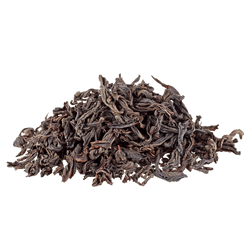
Black Tea Leaf
Black tea is made from the unfermented leaves of Camellia sinensis, the same plant that gives us Green and Oolong teas. As all true tea comes from the leaves of the Camellia sinensis plant, black tea is made by allowing the leaf to fully oxidize. During this process, chemical reactions cause the leaf to turn brown and create the characteristics that black tea is known for, often described as full-bodied, bold, and brisk.
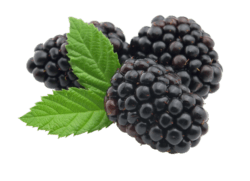
Blackberry

Blackberry Flavor
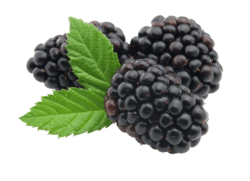
Blackberry Leaf
Since ancient times, the leaves of the blackberry plant have been used to promote health, especially throughout Europe and Asia, used traditionally to soothe the throat and the skin.
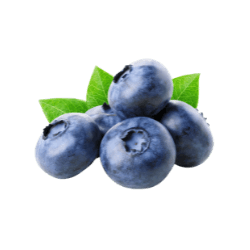
Blueberry
Blueberry is a flowering shrub that is primarily native to the Americas, Europe, and Asia. The sweet, juicy fruit of the Blueberry shrub is known to contain polyphenols and anthocyanins; antioxidant-rich compounds that are thought to have anti-inflammatory and immune-boosting properties. Given their cooling nature, blueberries are believed to help reduce Pitta.

Burdock Root
Burdock Root – a member of the daisy family that originated in Eurasia – is now firmly established as a naturalized plant in North America. Herbalists value burdock for helping to detoxify the liver. The root is served as a food in Japan, where it is known as gobo. Resembling a long brown carrot, burdock can be prepared in the same way you might enjoy a carrot, such as fresh juice or in a stir-fry dish.
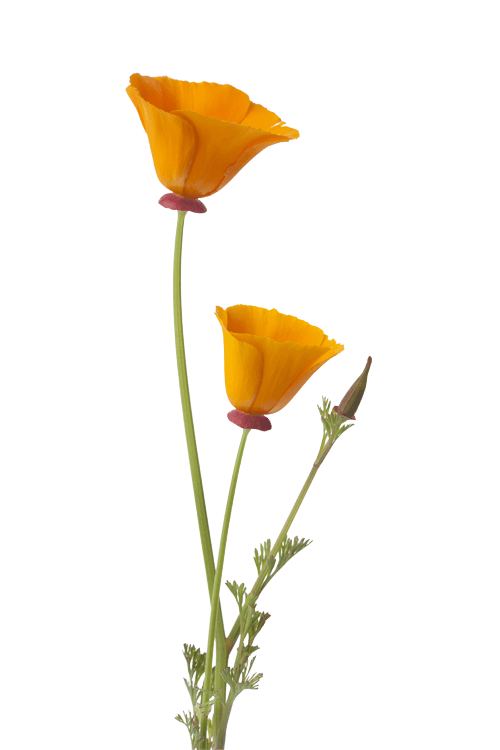
California Poppy
Masquerading as charming backyard ornament, it is in fact an herbal relaxant. California’s state flower, it is one of the most beautiful and distinctive American wildflowers, and you will find it growing abundantly throughout the lower altitudes of California, southeastern Oregon, Nevada, and Arizona.
In Europe, the German Commission E lists California poppy as an antispasmodic and sedative, and lists it for a wide variety of stress and depressive conditions. It has been found to inhibit the body’s production of adrenaline, in turn helping the body to relax. Phytotherapy practitioners commonly use California in combination with passion flower or valerian.

Cane Sugar
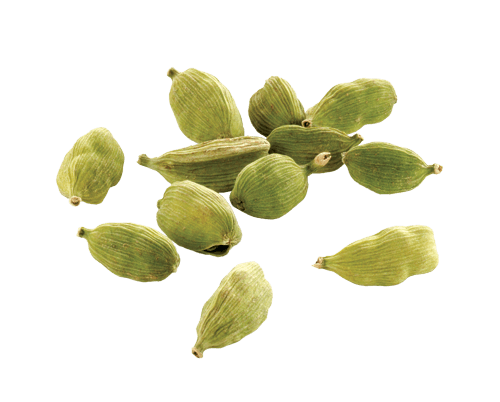
Cardamom
Cardamom is a uniquely flavored culinary herb in the ginger family. But cardamom is more than its delicious flavor. This herb is warming and has been traditionally used to support healthy stomach and digestive function as well as the respiratory system.
- Bedtime® Tea
- Blueberry Sage Stress Relief
- Breathe Deep® Tea
- CAFFEINE FREE Organic Chai Latte
- Calming Tea
- Chai Rooibos Tea
- CLASSIC Organic Chai Latte
- Cold Season Tea
- DeTox Tea
- Echinacea
Immune Support Tea - Egyptian
Licorice® Mint Tea - Egyptian Licorice® Tea
- Honey Chai Turmeric Vitality Tea
- Kava
Stress Relief® Tea - LIGHT Organic Chai Latte
- Mango Ginger Tea
- Orange Clove Tea
- Peach DeTox Tea
- Pumpkin Spice
Tea - Roasted Dandelion
Spice DeTox Tea - Soothing Caramel
Bedtime®Tea - Soothing Rose Hibiscus
Skin DeTox Tea - Stomach Ease Tea
- Sweet Ginger Citrus Turmeric Vitality Tea
- Throat Comfort® Tea
- Vanilla Peppermint
Tea
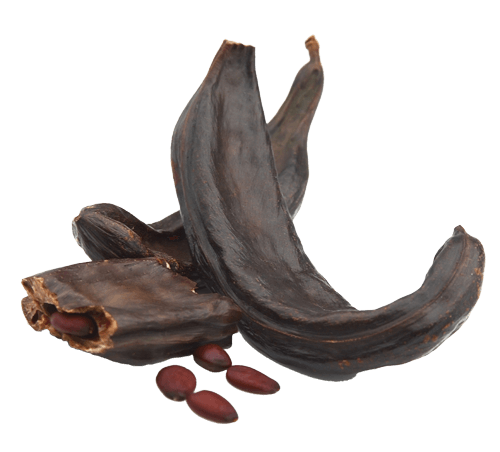
Carob Pod
Carob is a species of flowering evergreen shrub or tree in the pea family that is native to the Mediterranean region. Cultivated for its edible seed pods, carob supplies protein as well as vitamins and minerals. Carob Pod tastes a lot like chocolate, and being free from the stimulants caffeine and theobromine contained in chocolate, is a popular chocolate substitute.

Cayenne Pepper
Cayenne Pepper is a stimulating herb made from the dried pods of a certain variety of chili pepper. Well known for its fiery heat and pungent smell, cayenne is not only a popular culinary herb in many cuisines, but has also been used medicinally for thousands of years. Cayenne and other chilies, especially the red varieties, supports the production of endorphins, the mood elevating brain chemicals responsible for the chili eater’s high; hence cayenne is used to support balanced mood.
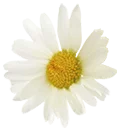
Chamomile Flower
Chamomile is a flowering plant in the daisy family that is native to Europe and Asia. The flower is a mild relaxant that supports balanced mood; hence a cup of tea made with chamomile is a time-honored herb used to promote sleep.
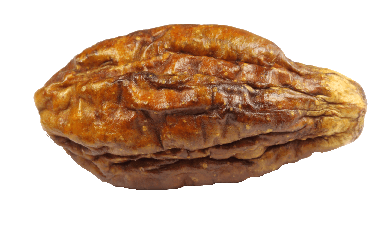
Chebulic Myrobalan Fruit (Haritaki)
Chebulic Myrobalan Fruit (Haritaki) is considered by some to be the single most important Ayurvedic herb, and is one of the three herbs in the famous Ayurvedic remedy triphala. Widely used in Tibetan medicine, it is called the king of herbs, and in Ayurveda, haritaki is known as the mother. Haritaki is strongly astringent, and is used to promote skin function, as well as to support digestion and elimination. Haritaki is also mildly laxative.

Chinese Skullcap Root
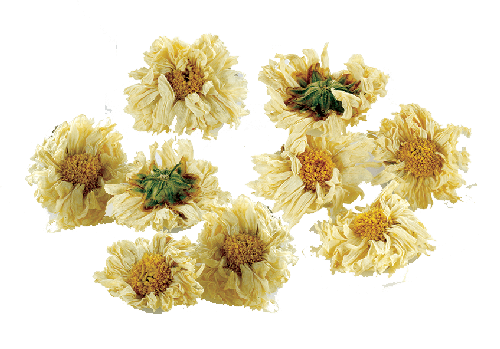
Chrysanthemum Flower
Chrysanthemums were first cultivated in China as a flowering herb as far back as the 15th century B.C.E. Chrysanthemum is a cooling herb traditionally used to help support the lungs and soothe the head. In Traditional Chinese Medicine, chrysanthemum is often combined with honeysuckle for a delicious drink that is especially useful for cooling the body.
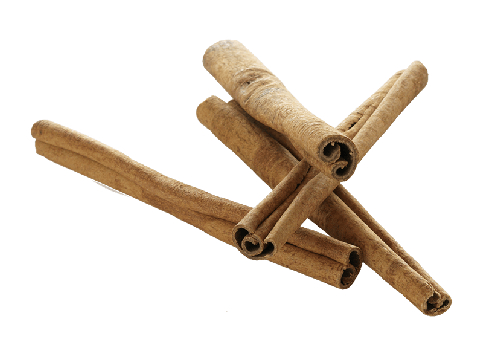
Cinnamon Bark
Cinnamon Bark comes from a small evergreen tree that is native to Sri Lanka. Cinnamon is a pungent, sweet and hot spice that can warm and invigorates the body and support function of the respiratory and digestive systems. It can also help to promote circulation to the joints and support immune function.
- Bedtime® Tea
- Breathe Deep® Tea
- CAFFEINE FREE Organic Chai Latte
- Chai Rooibos Tea
- Cinnamon Horchata
Stress + Sleep - CLASSIC Organic Chai Latte
- Cold Season Tea
- DeTox Tea
- Echinacea
Immune Support Tea - Egyptian
Licorice® Mint Tea - Egyptian Licorice® Tea
- Elderberry Lemon Balm Immune + Stress Tea
- Honey Chai Turmeric Vitality Tea
- Kava
Stress Relief® Tea - LIGHT Organic Chai Latte
- Mango Ginger Tea
- Orange Clove Tea
- Peach DeTox Tea
- Pumpkin Spice
Tea - Rich & Robust
Morning Vitality Tea - Roasted Dandelion
Spice DeTox Tea - Soothing Caramel
Bedtime®Tea - Spiced Blackberry Focus Tea
- Spicy Hibiscus Blossom Positive Energy Tea
- Sweet Clementine Stress Support Tea
- Sweet Ginger Citrus Turmeric Vitality Tea
- Throat Comfort® Tea
- Vanilla Peppermint
Tea - Vanilla Spice
Perfect Energy®Tea
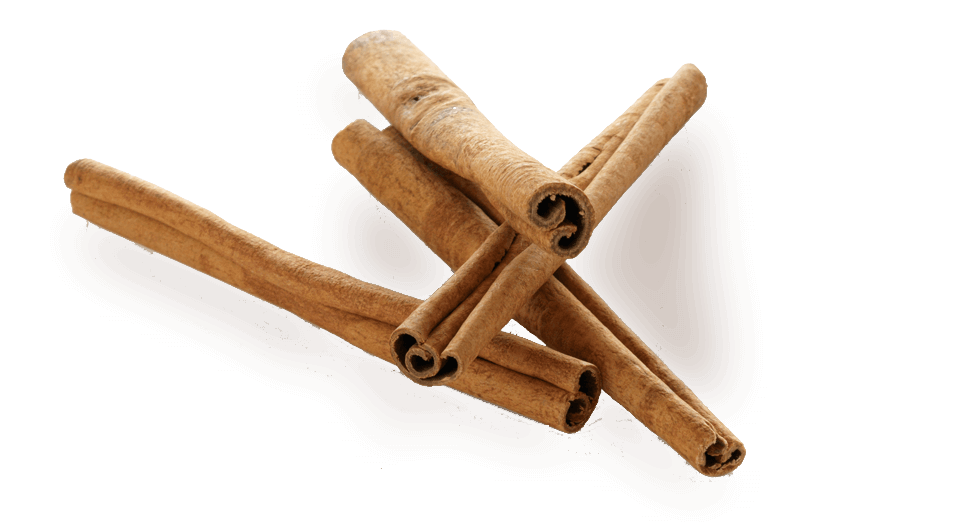
Cinnamon Bark Oil

Citric Acid
Citric acid is a mild acid that occurs naturally in citrus fruits, such as lemons and limes. It is added to tea to impart a light and pleasant sour taste.
- Blueberry Sage Stress Relief
- CAFFEINE FREE Organic Chai Latte
- CLASSIC Organic Chai Latte
- Lemon Ginger Tea
- LIGHT Organic Chai Latte
- Orange Clove Tea
- Raspberry Passion
Perfect Energy®Tea - Sweet Clementine Stress Support Tea
- Sweet Ginger Citrus Turmeric Vitality Tea
- Sweet Lemon Everyday Immune Tea
- Sweet Tangerine
Positive Energy Tea

Clove Bud
Clove Buds are the aromatic dried flower buds of a tree in the Myrtle family. The English name clove derives from Latin clavus (nail), as the shape of the buds resembles small nails. Clove bud is widely used as a spice in ancient Asian herbal traditions. With a warming quality, clove supports circulation and digestion.
- Chai Rooibos Tea
- CLASSIC Organic Chai Latte
- Cold Season Tea
- DeTox Tea
- Echinacea
Immune Support Tea - Egyptian
Licorice® Mint Tea - Egyptian Licorice® Tea
- Honey Chai Turmeric Vitality Tea
- LIGHT Organic Chai Latte
- Orange Clove Tea
- Peach DeTox Tea
- Pumpkin Spice
Tea - Roasted Dandelion
Spice DeTox Tea - Soothing Caramel
Bedtime®Tea - Spiced Blackberry Focus Tea
- Sweet Clementine Stress Support Tea
- Throat Comfort® Tea
- Vanilla Peppermint
Tea
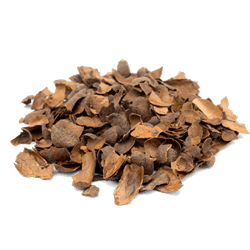
Cocoa Shells
The shells of the cocoa bean, cocoa shells are a source of chocolate, and more recently have been receiving attention as a natural source of antioxidants.
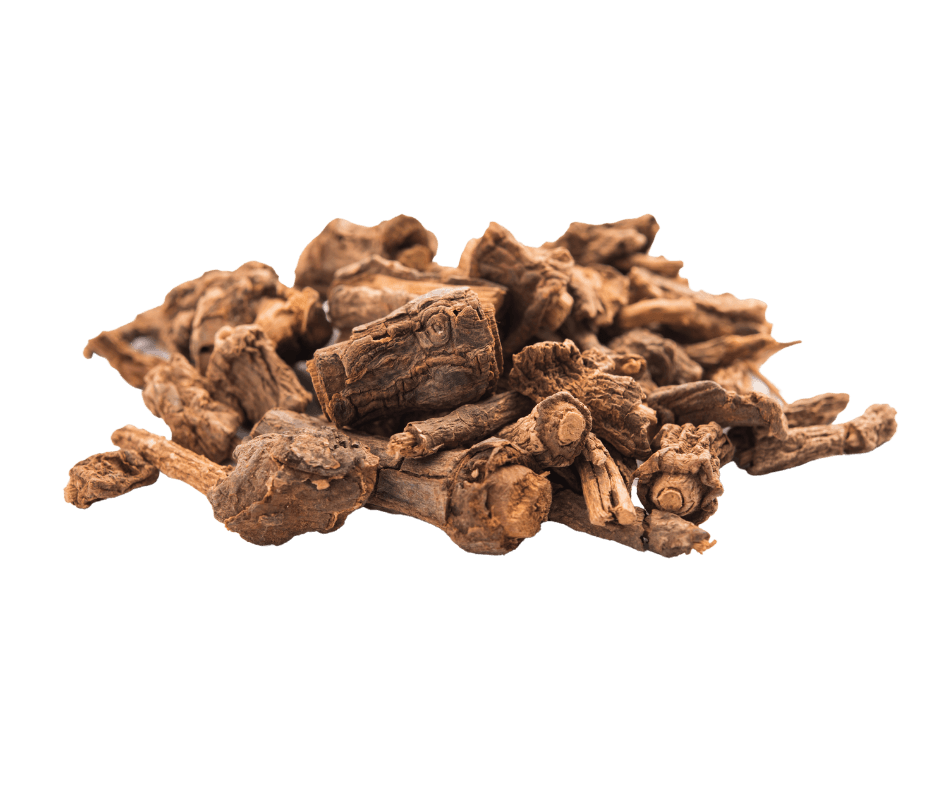
Conventional Indian Sarsaparilla Root

Coptis Root
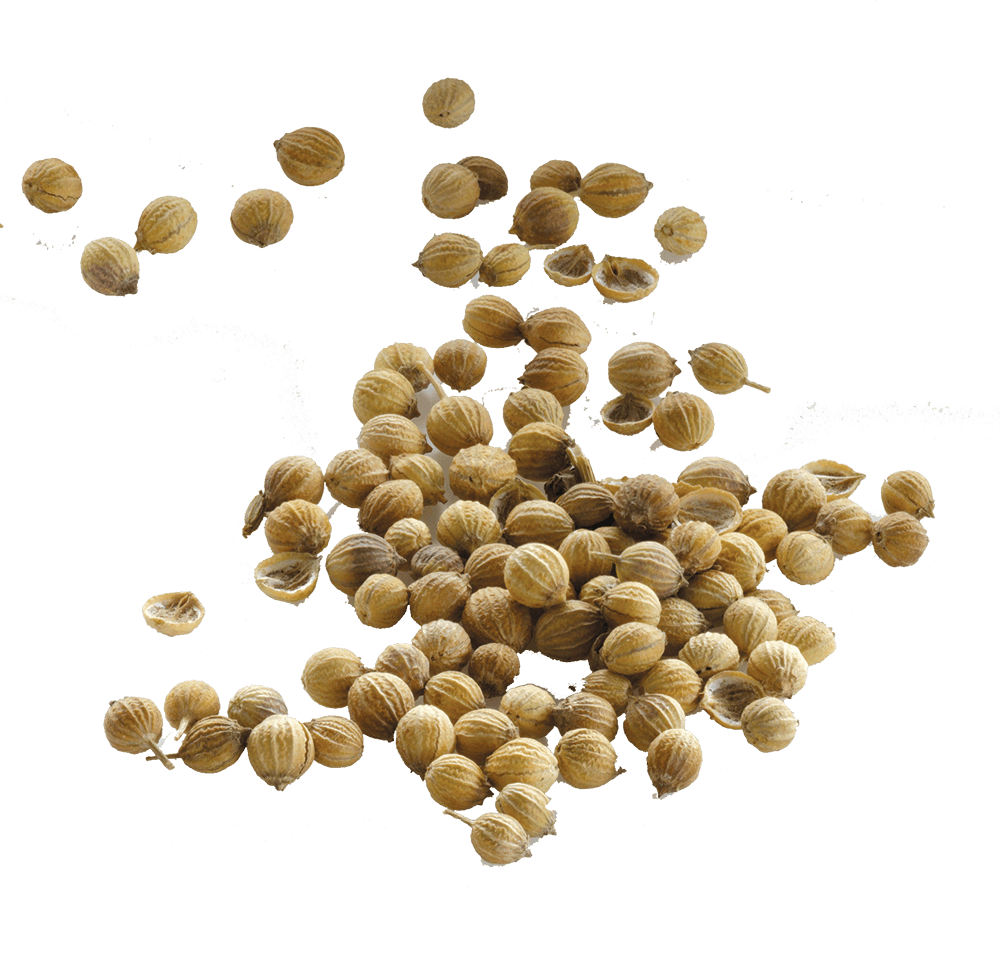
Coriander Seed
Coriander seed is not just a delicious spice used in cooking. According to Ayurveda, the seeds can support the urinary tract and can help soothe the stomach.
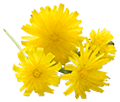
Dandelion Root
The root of a plant that many see as a pesky yard weed is a celebrated liver cleanser in the world of herbal medicine. Dandelion root has been traditionally used to support the liver, which in turn can support the skin.
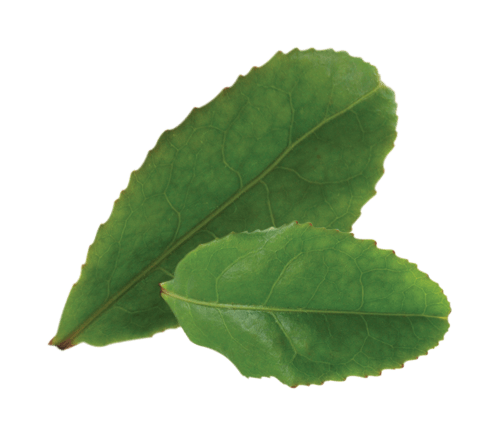

Dried Kombucha (from Fermented Black Tea)
Kombucha comes from north-central Asia. It is a strain of one bacterium and three or four different yeasts. When grown properly, the culture produces glucuronic acid, acetic acid, and many vitamins and amino acids that can help support the immune system. It is valued by herbalists for its ability to support intestinal function, supply nutrients to promote balanced intestinal flora, and its ability to help circulate the energy in the body. It can be detoxifying to the entire body and can help to support elimination and support metabolic harmony.

Echinacea Purpurea
See Echinacea Root.


Echinacea Root
Echinacea is a genus of nine species of herbaceous plants, all of which are native to the United States and southern Canada. One species, Echinacea angustifolia, was widely used by the North American Plains Indians for its general medicinal qualities. Today herbalists use the root to support the body’s immune system. Three Echinacea roots – purpurea, pallida and angustifolia – are used in herbal medicine and are considered to be clinically identical and interchangeable.
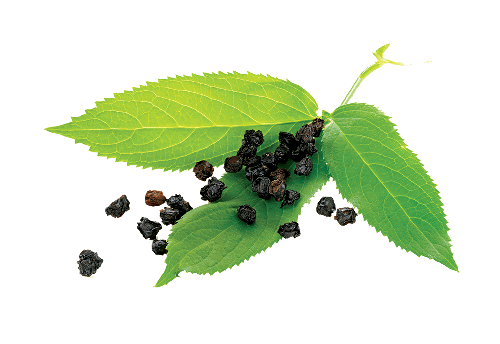
Elderberry Extract
Native to Europe, Elderberry has been used in European folk medicine since antiquity. Elderberries supply anthocyanidins; powerful purple pigment compounds that act as antioxidants. Elderberry can also help support respiratory function, and is used by herbalists to soothe the throat.
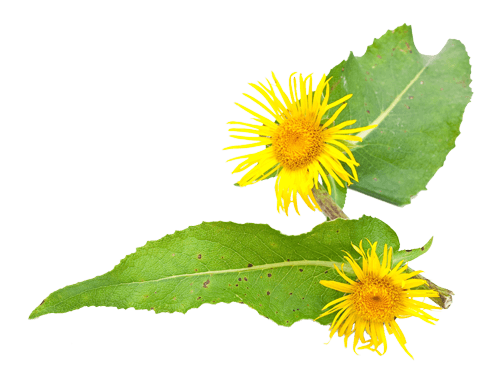
Elecampane Root
Elecampane is a beautiful tall-growing herb, the flowers of which resemble sunflowers. The plant grows wild throughout Europe, and has been used medicinally for centuries. Today, this herb is widely used to support respiratory health among European herbalists. Ayurveda reveres it as a rejuvenative tonic for the lungs.

Eleuthero Root
Eleuthero (Eleutherococcus senticosus) is often referred to as Siberian Ginseng. It is not a true ginseng, but a cousin of Asian ginseng. It has gained that nickname due to the fact that Siberian natives use it as a broad spectrum health enhancer, much the way ginseng is used. It has been traditionally used as a long-term stamina promoting herb.
See also Asian (Panax) Ginseng Root

Essential Oils
Essential oils are natural oils extracted from plants by distillation.
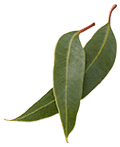
Eucalyptus Leaf
Eucalyptus (Eucalyptus globulus) is a tall evergreen tree native to Australia and Tasmania. Herbalists believe that eucalyptus is also broadly supportive of the immune and digestive systems.
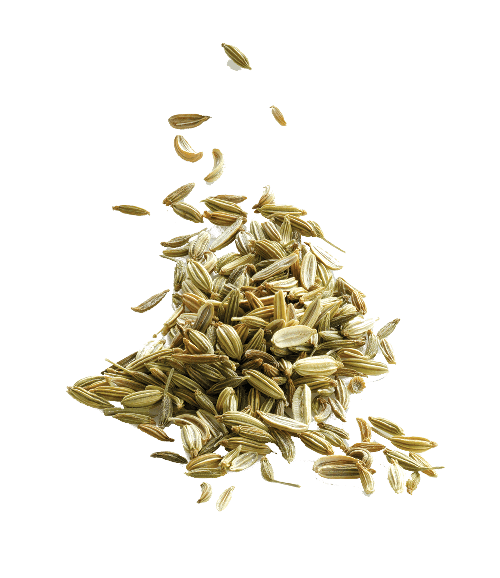
Fennel Seed
Botanically-speaking, fennel seeds are not seeds, but are the fruits of the sweet fennel plant, an herb that has been cultivated for culinary and medicinal use for thousands of years. In India, fennel seeds are routinely chewed after meals to support digestion and to act as an herbal mouth freshener.
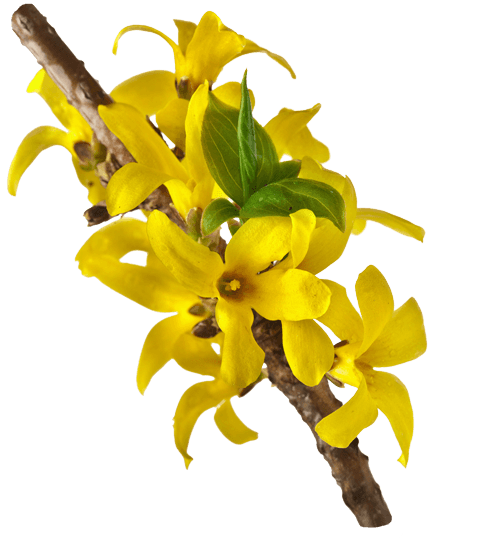
Forsythia Fruit
Forsythia fruit is the dried seed pod of Forsythia suspensa, a lovely bright yellow flowering bush that is among the first spring blooms in many northern climates. Native to China, forsythia fruit is used in Traditional Chinese Medicine (TCM) for detoxifying. Because of its detoxifying qualities, forsythia fruit often finds its way into TCM formulas to support the kidneys and skin.
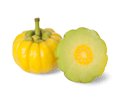
Garcinia Cambogia Fruit
Garcinia cambogia fruit, an exotic fruit from South India that has been traditionally used to help support stamina.
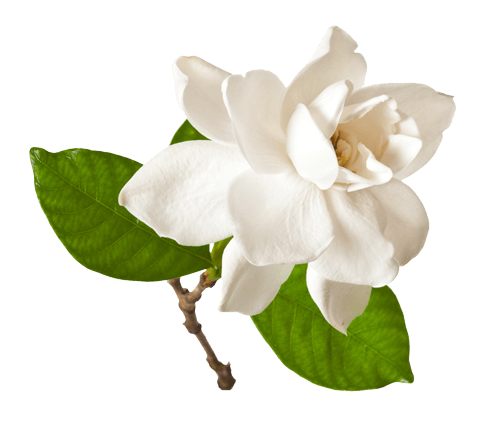
Gardenia Fruit
Gardenias were originally found only in China and Japan, but today there are over 200 different species of gardenia, mostly hybrids, throughout the world. Gardenia fruit is used extensively in Traditional Chinese Medicine (TCM), where it is known as zhi zi. TCM uses gardenia primarily to promote calm, but it is also used to support bladder and urinary tract health.
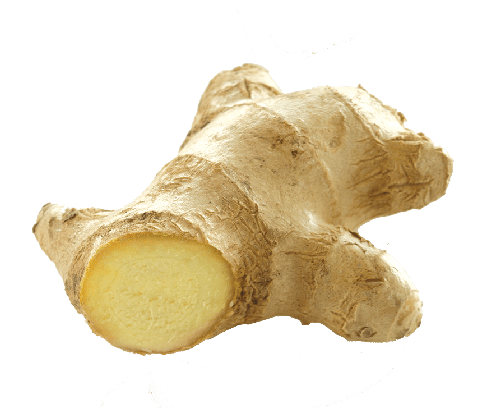
Ginger Juice
See Ginger Root
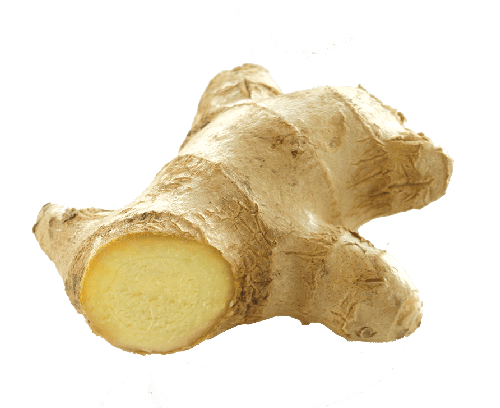
Ginger Root
Ginger Root, the underground stem, or rhizome, of the plant Zingiber officinale, has been used in many herbal traditions since ancient times. In Ayurveda, Ginger is known as the wonder herb, and it’s no wonder, since Ayurveda employs Ginger for a wide variety of health applications, including digestive support. Historically, Ginger Root was also one of the most respected herbs for supporting joint health. Additionally, Ginger Root has been traditionally used to support healthy peripheral circulation; and can aid in warming up cold hands and feet, and will also promote sweating when needed.
- Berry DeTox Tea
- Blackberry Apple Cider Digestive Awakening Tea
- Breathe Deep® Tea
- CAFFEINE FREE Organic Chai Latte
- Chai Rooibos Tea
- CLASSIC Organic Chai Latte
- Cold Season Tea
- DeTox Tea
- Echinacea
Immune Support Tea - Egyptian
Licorice® Mint Tea - Egyptian Licorice® Tea
- Elderberry Lemon Balm Immune + Stress Tea
- Ginger Tea
- Honey Chai Turmeric Vitality Tea
- Kava
Stress Relief® Tea - Lemon Ginger Tea
- LIGHT Organic Chai Latte
- Mango Ginger Tea
- Orange Clove Tea
- Peach Bergamot Bright Day Tea
- Peach DeTox Tea
- Pumpkin Spice
Tea - Rich & Robust
Morning Vitality Tea - Roasted Dandelion
Spice DeTox Tea - Soothing Caramel
Bedtime®Tea - Stomach Ease Tea
- Sweet Clementine Stress Support Tea
- Sweet Ginger Citrus Turmeric Vitality Tea
- Throat Comfort® Tea
- Vanilla Peppermint
Tea - Vanilla Spice
Perfect Energy®Tea

Ginseng and Eleuthero Root Extract
Ginseng and Eleuthero Root Extract (Asian Ginseng, American Ginseng and Eleuthero).
Also, see Asian (Panax) Ginseng Root.
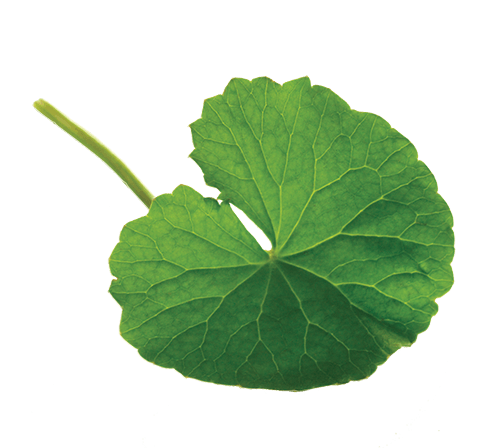
Gotu Kola
Gotu Kola, known as brahmi, which means godlike in the Ayurvedic tradition, it is used as an aid to meditation. In Ayurveda it is thought to help to balances circulation to the blood vessels of the skin, mucous membranes, nerves and brain.

Grapeseed Extract
Grapeseed Extract supplies procyanidins and resveratrol– antioxidants that combine to scavenge free radical and can help protect proteins and DNA from damage.

Green Tea Leaf
Green tea is made from the unfermented leaves of Camellia sinensis, the same plant that gives us black and oolong teas. All teas from Camellia sinensis supply antioxidants, but because green tea is the least processed, it is said to contain the most antioxidant polyphenols, which are responsible for its many health benefits.

Guayusa Leaf
Guayusa, a species of tree that’s native to the Amazon Rainforest, is one of three varieties of caffeinated holly trees. Guayusa Leaf has been used for centuries for its digestive and stimulating properties.
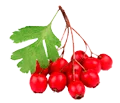
Hawthorn Berry
Hawthorn Berry, sometimes referred to as English Hawthorn Berry, comes from a small, spiny tree that is indigenous to all of Europe and the Mediterranean region. According to Ayurveda, tart/sour tastes help promote digestive function. As such, this sour berry has been traditionally used for hundreds of years to support the digestive system and to promote circulation.
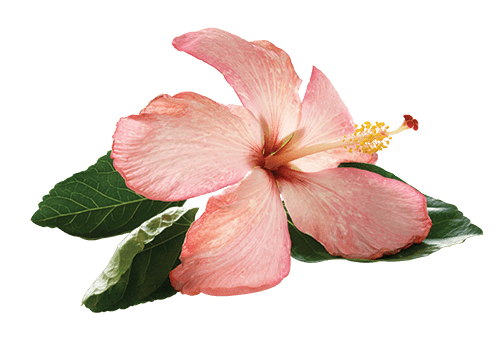
Hibiscus Flower
Hibiscus is a large genus of about 200 flowering plants native to warm, temperate, subtropical and tropical regions throughout the world. Used as a primary ingredient in many herbal beverages, hibiscus flower is also used by herbalists to support bowel function and urination. In Traditional Chinese Medicine, hibiscus is used to support skin health.
- Berry DeTox Tea
- Blueberry Sage Stress Relief
- Calming Tea
- Elderberry Lemon Balm Immune + Stress Tea
- Green Tea
Blueberry Slim Life Tea - Peach Bergamot Bright Day Tea
- Raspberry Passion
Perfect Energy®Tea - Soothing Rose Hibiscus
Skin DeTox Tea - Spiced Blackberry Focus Tea
- Spicy Hibiscus Blossom Positive Energy Tea
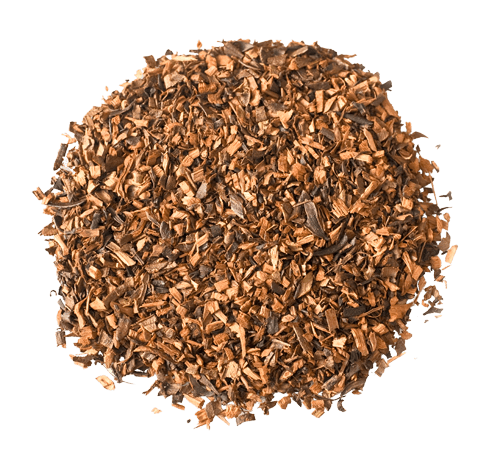
Honeybush
Honeybush is indigenous to the cape area of South Africa, where it has been used for centuries to make a beverage and a medicinal tea. Similar to the famous rooibos, also native to South Africa, honeybush brews into a delicious tea with a pleasant, mildly sweet taste and aroma, somewhat like honey. Honeybush tea is caffeine free and supplies antioxidants.

Indian Sarsaparilla Root
Traditionally used as one of the herbs that gives the delicious taste to root beer, Indian Sarsaparilla Root has also been used medicinally as a spring tonic for its detoxifying features. Sarsaparilla contains plant hormones that are thought by herbalists to support and balance heat in the body.

Jasmine Green Tea Leaf
Jasmine is a large genus of flowering shrubs in the Olive family. In traditional herbal medicine, it is used to help to soothe the nerves. Jasmine flowers are often brewed as an herbal infusion, but are more often combined with green tea or sometimes an oolong tea. Jasmine’s mystic properties include bringing luck in wealth and love.
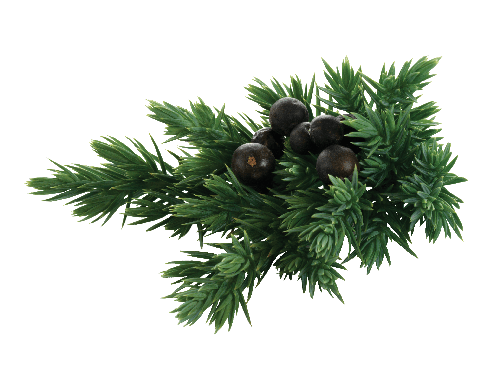
Juniper Berry Extract
A juniper berry is not a true berry, but is a seed cone with unusually fleshy and merged scales that give it a berry-like appearance. Used as a spice in European cuisine, juniper berry has been used in traditional herbal medicine to support kidney and urinary tract function, as well as to help maintain healthy blood pressure levels that are already within the normal range. The essential oil can be stimulating to the kidneys. The warming and bitter properties support digestion and can soothe intestinal gas. Juniper berry can also be warming for the joints.
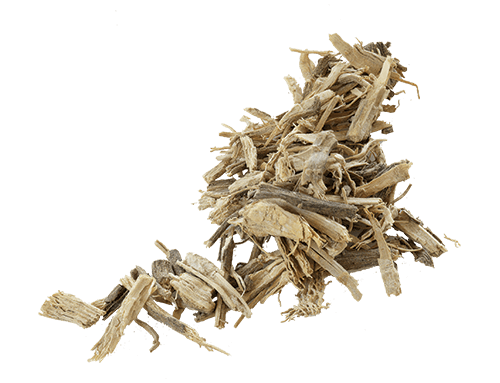
Kava Root
Kava Root (Piper methysticum) has been used for centuries in the South Pacific as a relaxing herbal beverage. This mild, effective herb helps with daily tension and supports a calm mind that can help to support sleep at bedtime.

Kava Root Extract
Kava Root (Piper methysticum) has been used for centuries in the South Pacific as a relaxing herbal beverage. This mild, effective herb helps with daily tension and supports a calm mind that can help to support sleep at bedtime.

L-Theanine Suntheanine®
L-Theanine® is a naturally occurring amino acid found in green tea (Camellia sinensis), which promotes relaxation by calming the mind.

Lavender Flower
Lavenders belong to the Mint family of plants, which includes many herbs such as sages, thymes, rosemary, savory, oregano, balms and mints. Often referred to as English Lavender Flower, so-called because it formed the basis of England’s lavender oil industry in the 18th century, is a beautiful, delightfully fragrant herb. Lavender has been traditionally used to support balanced mood, as well as to help soothe occasional stress and support sleep.
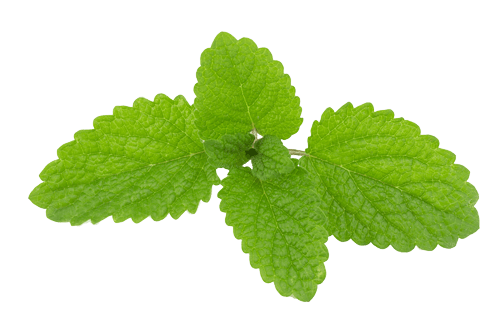
Lemon Balm Leaf
Lemon Balm (Melissa officinalis) has been traditionally used to soothe the nerves and to reduce every day stress. It acts as a very mild sedative, is anti-spasmodic and traditionally used in teas to promote restful sleep. In addition, it provides a bright, pleasant lemon flavor and aroma.
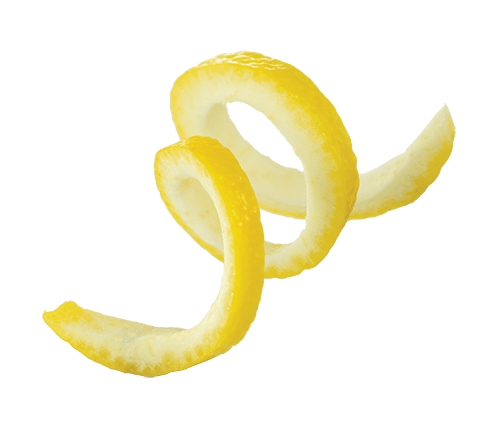
Lemon Peel
Lemon Peel is used in traditional herbal medicine to support digestion. Citrus peel is pungent, bitter and warm.

Lemongrass
Lemongrass is a tropical herb that is popular in Thai cooking. Traditionally, is has been used to support normal respiratory function. Lemongrass tastes great and is a warming herb that can support digestion.
- Blueberry Sage Stress Relief
- Calming Tea
- Cold Season Tea
- Echinacea
Immune Support Tea - Elderberry Lemon Balm Immune + Stress Tea
- Ginger Tea
- Green Tea
Kombucha Tea - Green Tea
Super Antioxidant Tea - Honey Lavender
Stress Relief Tea - Honey Lemon
Throat Comfort® Tea - Lemon Ginger Tea
- Sweet Clementine Stress Support Tea
- Sweet Ginger Citrus Turmeric Vitality Tea
- Sweet Lemon Everyday Immune Tea
- Sweet Tangerine
Positive Energy Tea

Licorice Root
Licorice root is a flavorful, sweet herb that has been used for thousands of years and is still one of the most widely used herbs in all herbal systems. Licorice has been used traditionally to support the skin and the liver. It also is thought by herbalists to help soothe indigestion and the throat.
- Bedtime® Tea
- Blackberry Apple Cider Digestive Awakening Tea
- Breathe Deep® Tea
- Calming Tea
- Cold Season Tea
- DeTox Tea
- Echinacea
Immune Support Tea - Egyptian
Licorice® Mint Tea - Egyptian Licorice® Tea
- Elderberry Lemon Balm Immune + Stress Tea
- Ginger Tea
- Green Tea
Super Antioxidant Tea - Honey Lemon
Throat Comfort® Tea - Lemon Ginger Tea
- Mango Ginger Tea
- Peach Bergamot Bright Day Tea
- Peach DeTox Tea
- Spiced Blackberry Focus Tea
- Stomach Ease Tea
- Sweet Lemon Everyday Immune Tea
- Throat Comfort® Tea
- Vanilla Spice
Perfect Energy®Tea

Mango

Mango Pieces

Matcha Green Tea
Matcha Green Tea – the only form of tea in which the entire leaf is used – is made from hand-harvested Green Tea leaves which are shaded during the final weeks of harvest, allowing new tea shoots to develop. These shoots produce long, thin leaves that impart the rich, delicious flavor for which Matcha Green Tea is known. In addition to its robust flavor, Matcha Green Tea is a rich source of catechin polyphenols, which provide antioxidants to support overall health.

Monk Fruit Extract
Monk Fruit, also known as Luo Han Guo, is a small fruit from Asia, and is used as a natural sweetener. Essentially non-caloric, it is 20 times sweeter than sugar.
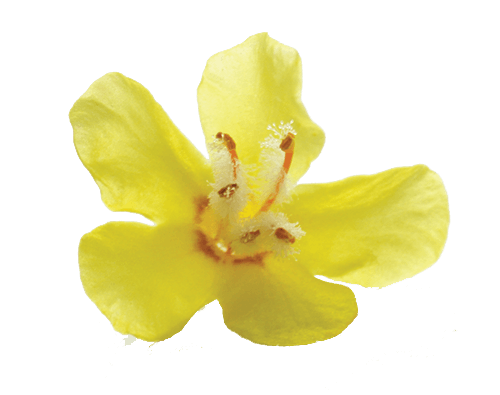
Mullein Leaf
A common wildflower native to Europe and Asia, mullein has a long history of use in herbal medicine as a soothing herb. Herbalists have traditionally used mullein to support the immune and respiratory systems.
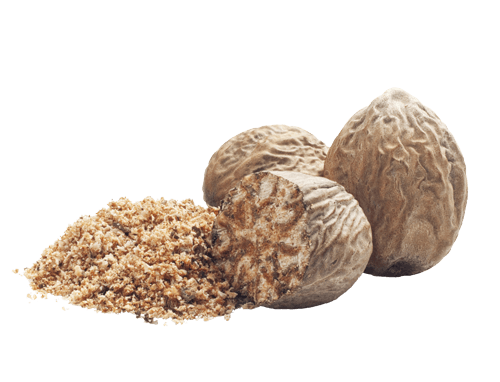
Nutmeg
Nutmeg is an evergreen tree native to Indonesia and is the only plant that is the source of two different spices. Nutmeg is actually the seed of the tree, while the dried lacy reddish covering or aril of the seed gives us mace. Nutmeg has a sweet, nutty aroma and slightly sweet taste.
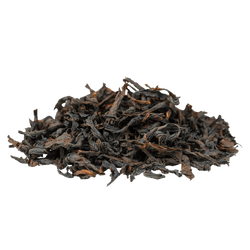
Oolong Tea Leaf
Oolong tea is a semi-oxidized Chinese tea made from the leaves of the Camellia sinensis plant, the same plant used to make Black and Green Teas. It is first left out to dry and wither under the sun, then rolled to begin the oxidation process.

Orange Peel
Orange peel, as with all citrus peels, is used in traditional herbal medicine to support the digestive system. Traditionally, citrus peel was used to support normal function in the chest and diaphragmatic region. Citrus peel is pungent, bitter and warm.
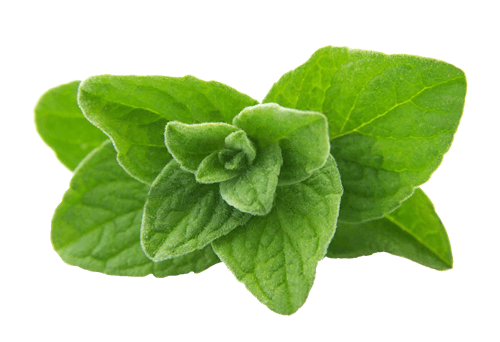
Oregano Leaf
Oregano Leaf is a close botanical and chemical cousin to thyme and savory, which are all in the mint family. Traditionally, oregano was used to help soothe indigestion and to support lung and sinus function.

Organic Flavors
The Organic Flavors used in Yogi teas are made from organic natural sources such as spices, fruits, herbs and roots, and do not contain nor are they processed with any artificial ingredients or synthetic materials. They’re also vegan, gluten free, non-GMO and don’t contain any MSG. Further, they are free of the nine FDA recognized allergens and therefore don’t contain tree nuts, peanuts, sesame, milk, eggs, fish, crustacean shellfish, wheat, or soybeans.
- Bedtime® Tea
- Berry DeTox Tea
- Blackberry Apple Cider Digestive Awakening Tea
- Blueberry Sage Stress Relief
- CAFFEINE FREE Organic Chai Latte
- Calming Tea
- Cinnamon Horchata
Stress + Sleep - CLASSIC Organic Chai Latte
- Echinacea
Immune Support Tea - Egyptian Licorice® Tea
- Green Tea
Blueberry Slim Life Tea - Green Tea
Kombucha Tea - Honey Chai Turmeric Vitality Tea
- Honey Lavender
Stress Relief Tea - Honey Lemon
Throat Comfort® Tea - Kava
Stress Relief® Tea - Lemon Ginger Tea
- LIGHT Organic Chai Latte
- Mango Ginger Tea
- Orange Clove Tea
- Peach DeTox Tea
- Pumpkin Spice
Tea - Raspberry Passion
Perfect Energy®Tea - Relaxed Mind Tea
- Soothing Caramel
Bedtime®Tea - Soothing Rose Hibiscus
Skin DeTox Tea - Spicy Hibiscus Blossom Positive Energy Tea
- Stomach Ease Tea
- Sweet Clementine Stress Support Tea
- Sweet Lemon Everyday Immune Tea
- Sweet Tangerine
Positive Energy Tea - Vanilla Peppermint
Tea - Vanilla Spice
Perfect Energy®Tea
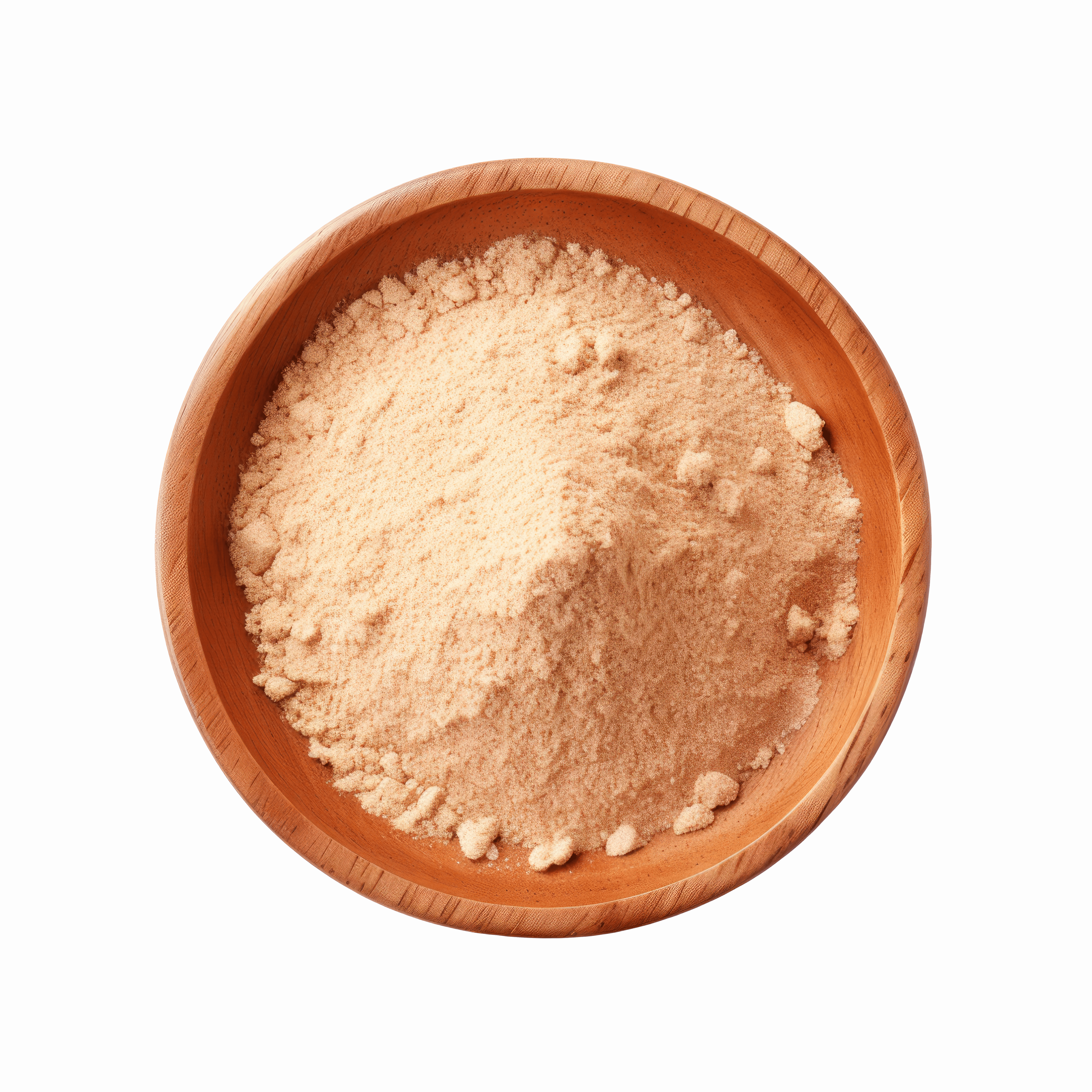
Organic Honey Powder
Organic Honey Powder consists of natural organic honey that drying to form a fine powder used for sweetening.

Organic L-Theanine
L-Theanine® is a naturally occurring amino acid found in green tea (Camellia sinensis), which promotes relaxation by calming the mind.
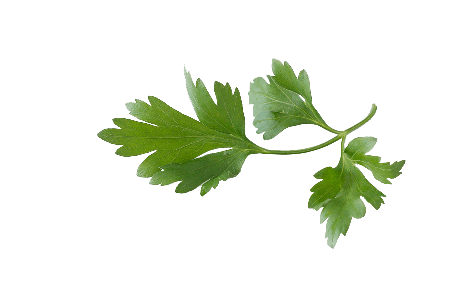
Parsley Leaf
Parsley Leaf is a bright green biennial herb with a long history of culinary use in the Middle East, Europe and North America. It also has a long history of use in herbal medicine to support the urinary system. Parsley is diuretic, and so has been traditionally used to support the bladder and can help generally with proper water balance in the body.
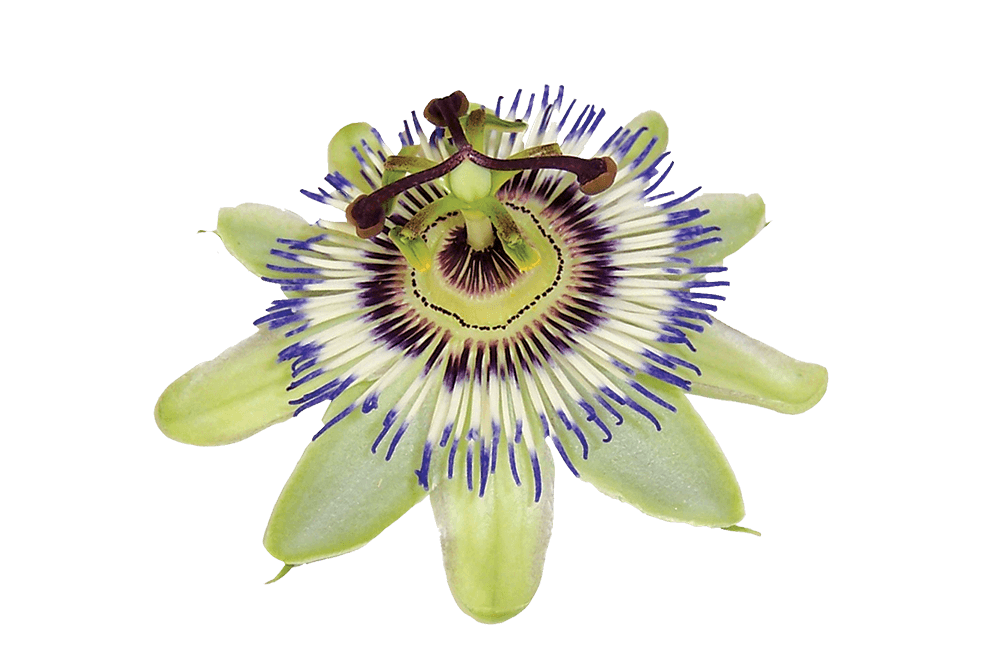
Passionflower Extract
Passionflower is a vine known for its beautiful white flowers with purple, blue, or pink calyx crown blooms. Native to the Americas, the plant is primarily tropical, but some of its 400 species can grow in colder climates. In traditional herbal medicine, passion flower has been used to support relaxation. The leaves are used to support a relaxed mood, soothe stress and tension and to support sleep.

Passionflower Herb
Passion flower is a vine known for its beautiful white flowers with purple, blue, or pink calyx crown blooms. Native to the Americas, the plant is primarily tropical, but some of its 400 species can grow in colder climates. In traditional herbal medicine, passion flower has been used to support relaxation. The leaves are used to support a relaxed mood, soothe stress and tension and to support sleep.
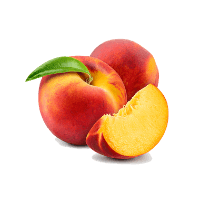
Peach
‘Prunus persica’, commonly known as the Peach, grow on deciduous trees and are believed to have originated in China. Peaches are a natural source of Zinc and Vitamin C, and, given their fiber content, are thought to aid in healthy digestion. In Ayurveda, Peaches are believed to balance excess pitta or vata.
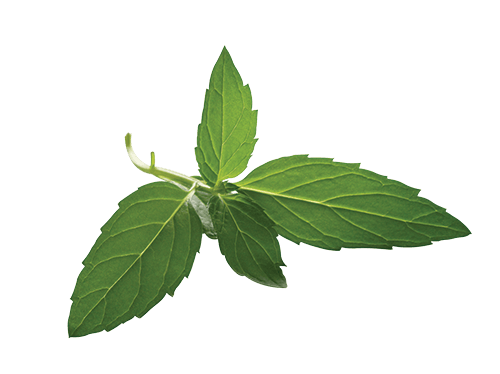
Peppermint Leaf
Peppermint is a perennial plant that produces light purple flowers and green leaves with serrated edges. Commonly used as a flavoring in products such as candy, chewing gum, toothpaste, and ice cream, peppermint also has been used traditionally to cool the body by promoting sweating, which can help support the respiratory system. Peppermint has also been widely used to support digestion and to soothe an occasional minor upset stomach.
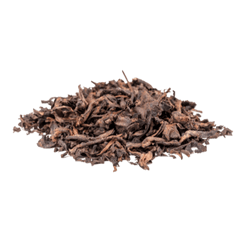
Puerh Tea Leaf
One of the most sought-after teas in the world, Puerh is a variety of Camellia sinensis from broad-leafed Assam tea trees. These trees flourish in warm, humid climates, and are grown and cultivated at altitudes of over 5,000 feet. After being harvested, Puerh is fermented and allowed to age in order to develop its complex flavor profile. The aroma of Puerh is piney and resinous, while the first sip is vegetal, woody, and earthy.
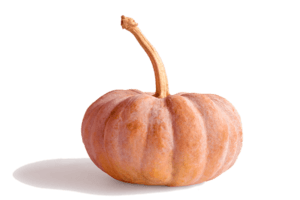
Pumpkin
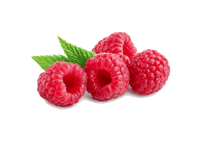
Raspberry
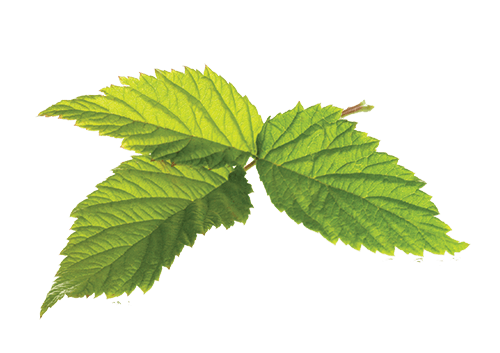
Raspberry Leaf
The leaves of the raspberry plant have been used as a medicinal herb for centuries and is traditionally recommended to support the uterus.

Red Clover
Red clover is a member of the Pea family, which includes not only peas, but also beans and peanuts. In herbal medicine, red clover flower is used as a general detoxifying herb. It has a pleasant sweet taste.
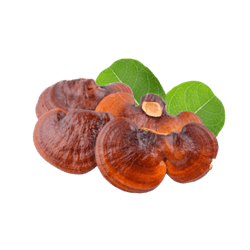
Reishi Mushroom Extract
Reishi Mushroom, known as the “mushroom of immortality,” is a fungus traditionally used in Eastern medicine for its adaptogenic properties. Adaptogens are believed to help the body cope with stressors, and may support the body’s immune and anti-inflammatory functions. Reishi Mushrooms have a woody, earthy flavor, and are a popular, antioxidant-supplying addition to coffee, tea, and smoothies.

Rhubarb Root
Rhubarb Root (Rheum palmatum) is a cold herb that is traditionally used to support bowel elimination. It has been used as a detoxifying herb for the entire body.
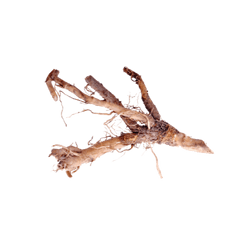
Roasted Chicory Root
Chicory is a bushy perennial herb with blue, lavender, or occasionally white flowers. The roasted root has a robust, earthy flavor, and is used in traditional herbal medicine to support the liver. Roasted Chicory Root is also added to coffee or used as a coffee substitute in many parts of the world.


Rooibos Leaf (Redbush)
Rooibos Leaf, a member of the legume family, is a shrubby African plant that is a bedtime favorite among South African herbalists, consumers and even physicians. This sweet, caffeine-free, relaxing herb supplies antioxidants and has also been traditionally used to support the immune system.
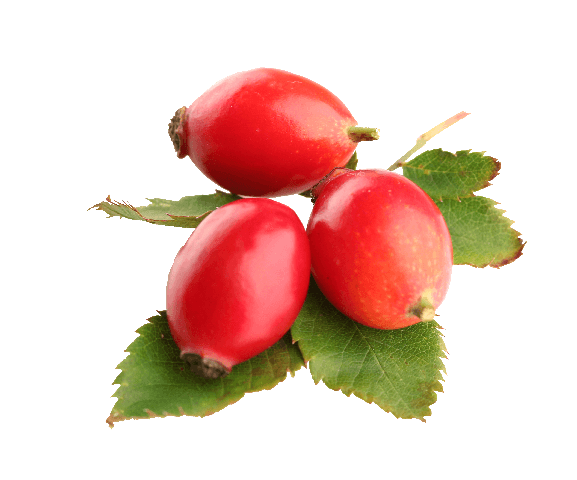
Rose Hip
The rose hip is the pomaceous (similar to an apple) fruit of the rose plant. Rose hip has a delicious tart taste and astringent action and supplies antioxidants and vitamin C. In traditional herbal medicine, rose hip is used to support the immune system.

Rose Petal
Rose Petal is a popular food and herbal supplement in the Middle East and India. In herbal traditions, Rose Petal was used for balancing heat in the body and soothing mucous surfaces. Rose Petal can also help to cool and soothe the skin; hence its popularity as an ingredient in many topical skin preparations.
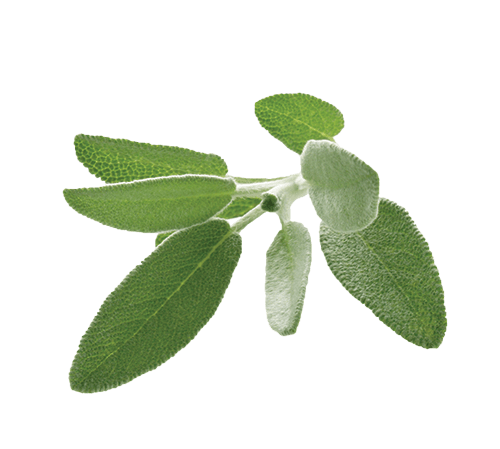
Sage
Sage leaf (Salvia officinalis) is regarded by Ayurveda as specific for calming the heart, excessive desires and passions. In addition to the herb’s antioxidant and anti-inflammatory properties, centuries-old theories that sage can improve memory appear to be borne out by modern research, as participants in a recent study given sage oil tablets performed much better in a word recall test. Experts believe the active ingredient may boost levels of a chemical that helps transmit messages in the brain.

Shatavari Root
Shatavari Root (Asparagus racemosus) is a cooling herb. It is thought by herbalists to support long term stamina.
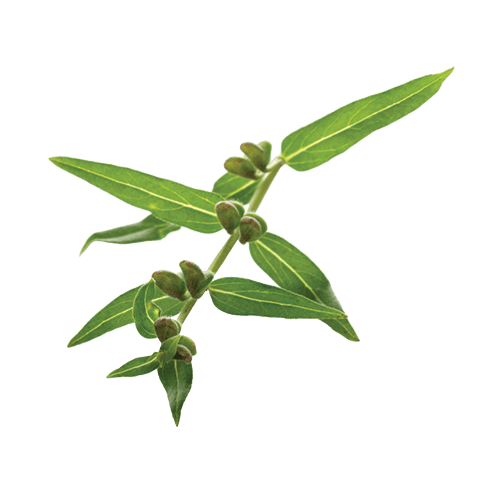
Skullcap Leaf
Skullcap is a member of the mint family, and has numerous uses in traditional herbal medicine. Traditionally used as a mild relaxant. Ayurveda says that skullcap enhances meditation and awareness and that it is emotionally, as well as physically, calming.

Slippery Elm Bark
Slippery Elm Bark is native to North America. A soothing, mucilaginous herb, slippery elm bark is used internally to soothe digestion and support bowel movements. The consistency comes from a high content of soluble fiber, which makes it valuable as a fiber laxative. As a poultice, it has been traditionally used to soothe dry skin. It is also a favorite of Western herbalism for usefulness in soothing a sore throat.
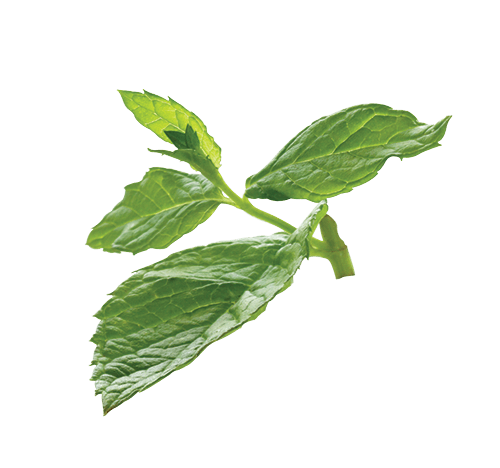
Spearmint Leaf
Spearmint Leaf has been used for culinary and medicinal purposes since the time of the ancient Romans. It is mildly soothing and relaxing overall. Ayurveda says that this herb can help to clear the mind and senses. Like all mints, spearmint is a mild diaphoretic that can help support the respiratory system.
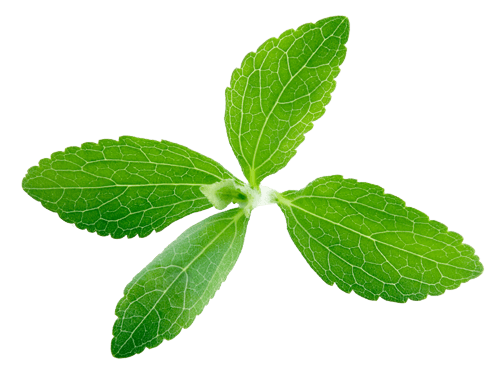
Stevia Leaf
Stevia is a genus of about 240 species of herbs and shrubs in the sunflower family native to subtropical and tropical South America and Central America. The leaf is used primarily as a sweetener in South America. Locals there use it as a substitute for sugar for those who can’t use sugar. Various glycosides, including stevoside – which is about 100 to 200 times sweeter than sugar – provide the sweetness. It is widely used as a non-sugar sweetener in other areas of the world, particularly in Japan.
- Bedtime® Tea
- Berry DeTox Tea
- Blueberry Sage Stress Relief
- Chai Rooibos Tea
- Cinnamon Horchata
Stress + Sleep - Echinacea
Immune Support Tea - Egyptian
Licorice® Mint Tea - Green Tea
Blueberry Slim Life Tea - Honey Chai Turmeric Vitality Tea
- Honey Lavender
Stress Relief Tea - Honey Lemon
Throat Comfort® Tea - Kava
Stress Relief® Tea - Peach Bergamot Bright Day Tea
- Raspberry Passion
Perfect Energy®Tea - Relaxed Mind Tea
- Soothing Caramel
Bedtime®Tea - Soothing Rose Hibiscus
Skin DeTox Tea - Spiced Blackberry Focus Tea
- Sweet Clementine Stress Support Tea
- Sweet Ginger Citrus Turmeric Vitality Tea
- Sweet Tangerine
Positive Energy Tea - Vanilla Peppermint
Tea - Vanilla Spice
Perfect Energy®Tea
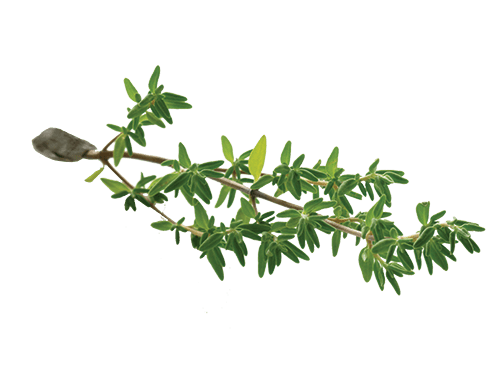
Thyme Leaf
Thyme, a well-known culinary herb, is also known as a powerful herbal antiseptic. Thyme contains an essential oil composed mainly of the active ingredients thymol and carvacrol. The ancient Greeks used thyme for its antiseptic properties. Later Europeans used it to support the respiratory system. Today, natural healing practitioners continue to use it to support the upper respiratory system.
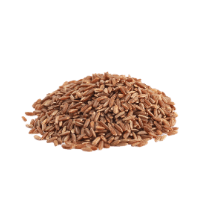
Toasted Brown Rice
Toasted Brown Rice adds rich, toasted and nutty flavor to tea. Additionally, Toasted Brown Rice is rich in vitamins and minerals including manganese and Vitamin B.
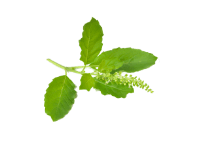
Tulsi Leaf
Tulsi Leaf, also referred to as Basil Leaf or Holy Basil, is a delicious and well-known culinary herb that is rich in antioxidants. Tulsi is considered a warming herb and has been traditionally used to support the immune system and overall health.
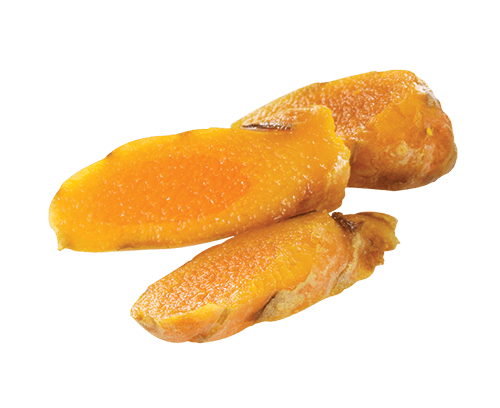
Turmeric Root
Turmeric Root, an herbaceous perennial in the ginger family, has been traditionally used for centuries and remains as one of the most widely used herbs that can support the joints. In India, it is commonly combined with ginger.
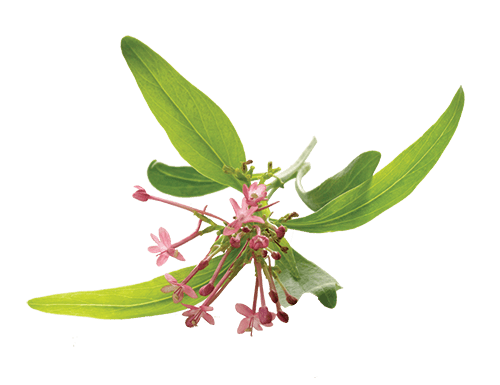
Valerian Root
Valerian is a hardy perennial flowering plant, with heads of sweetly scented pink or white flowers, the fragrant flowers of which were used as a perfume in the sixteenth century. Today, valerian root is a herb that promotes relaxation and is widely used in Europe because of its calming effect. Valerian works best when taken right at bedtime to calm the mind to promote sleep.
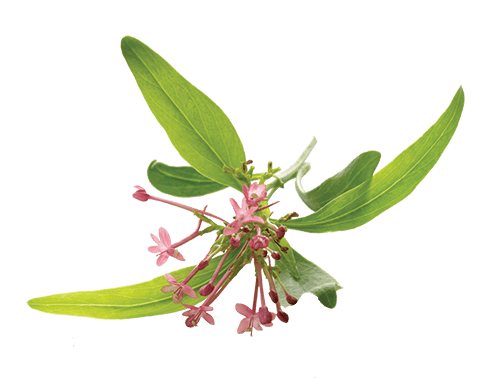
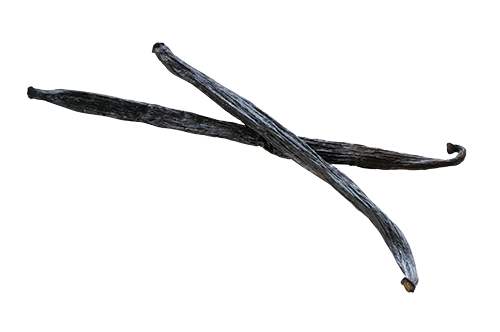
Vanilla Bean
Vanilla beans are derived from Vanilla orchids. Described as delicate, spicy and sweet, vanilla bean is the second only to saffron as the most valuable spice in the world and is known for its wonderful flavor and aroma.
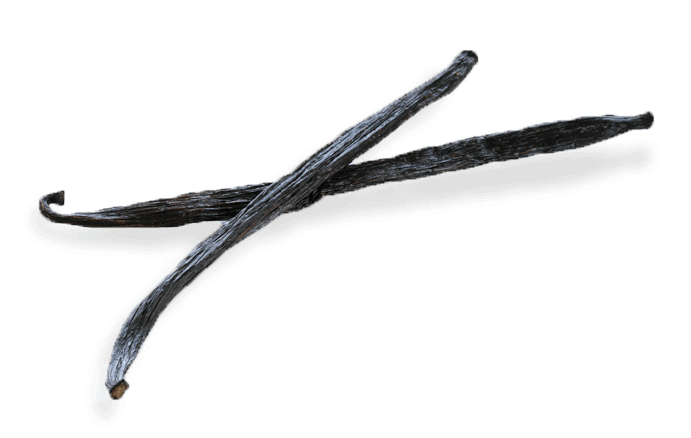
Vanilla Extract
See Vanilla.

Vanilla Flavors


Wild Cherry Bark
Ever wonder why all cough syrup is cherry flavored? This flavorful herb native to North America was traditionally used to soothe the throat.
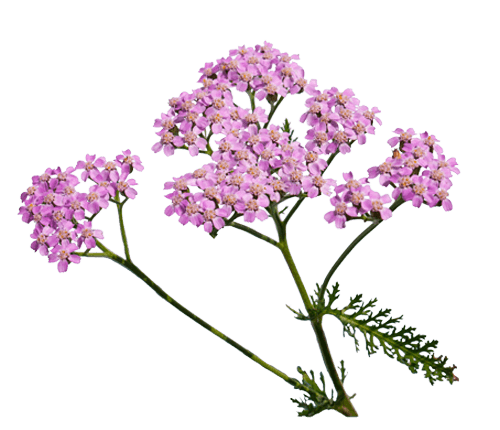
Yarrow Flower
A perennial herb native to Europe and Asia and naturalized in North America and throughout the world, yarrow flower is a very popular herb in Western herbalism. It has a been traditionally used to support perspiration and urination. Yarrow is a cold, bitter herb that also is used to support respiratory function.
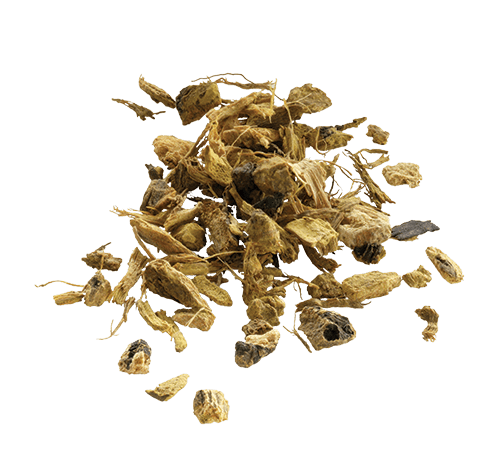
Yellow Dock Root
Yellow dock (Rumex crispus) is leafy-green plant distinguished by its yellow carrot-shaped root. In herbal medicine, it has a long history of use as a detoxifying herb, as well as to support the skin and liver; for those purposes it is often combined with dandelion root. A mild laxative, it contains anthraquinone glycosides, the active ingredients also found in senna leaf. A rich source of iron, yellow dock root has been traditionally used to supply iron to the diet.

Yerba Maté
Traditionally harvested in South America, the leaves of the Yerba Maté plant impart an herbaceous or vegetal flavor, and contain caffeine and a variety of polyphenols.


